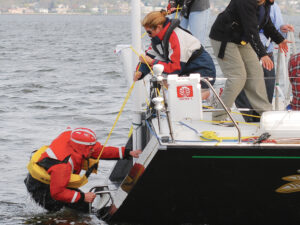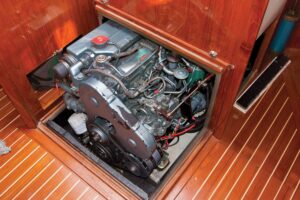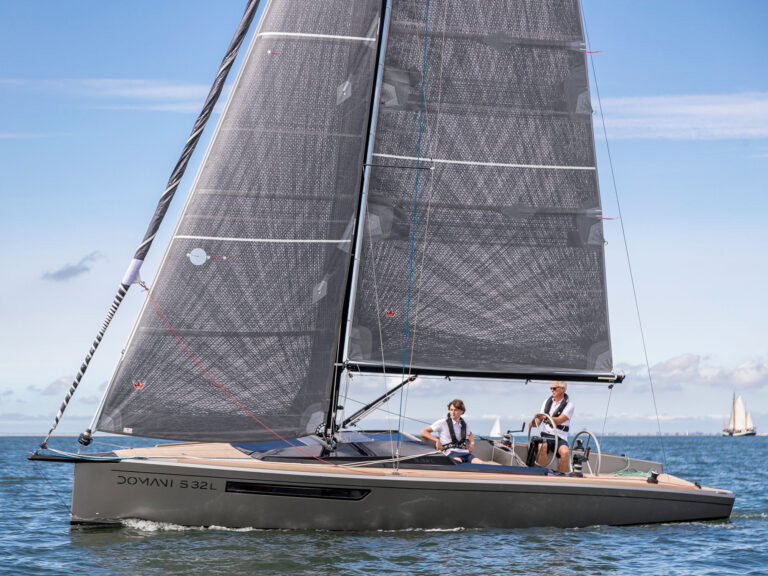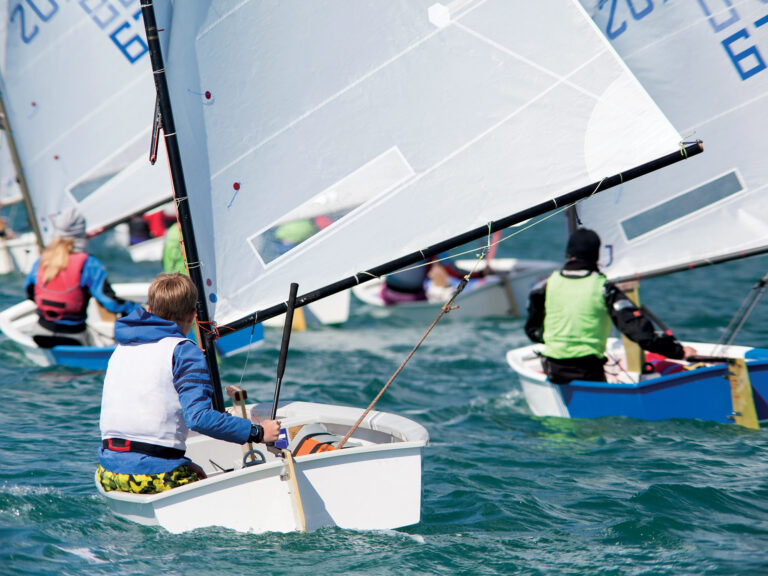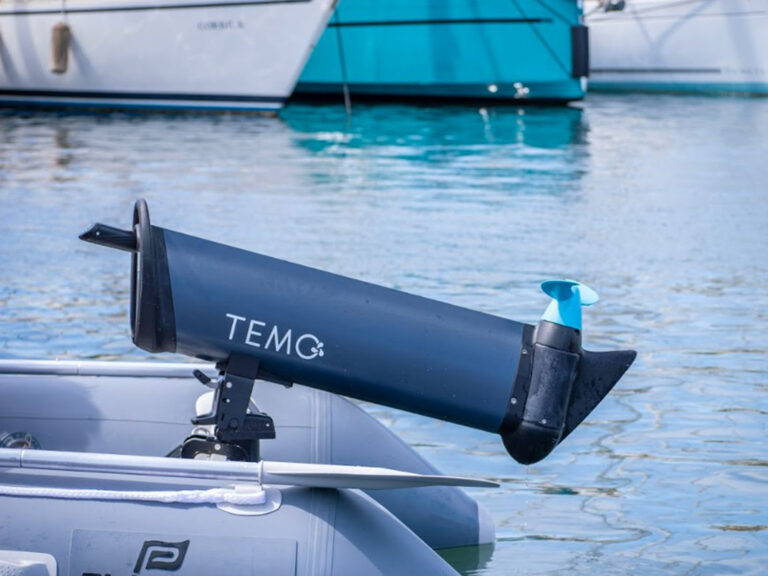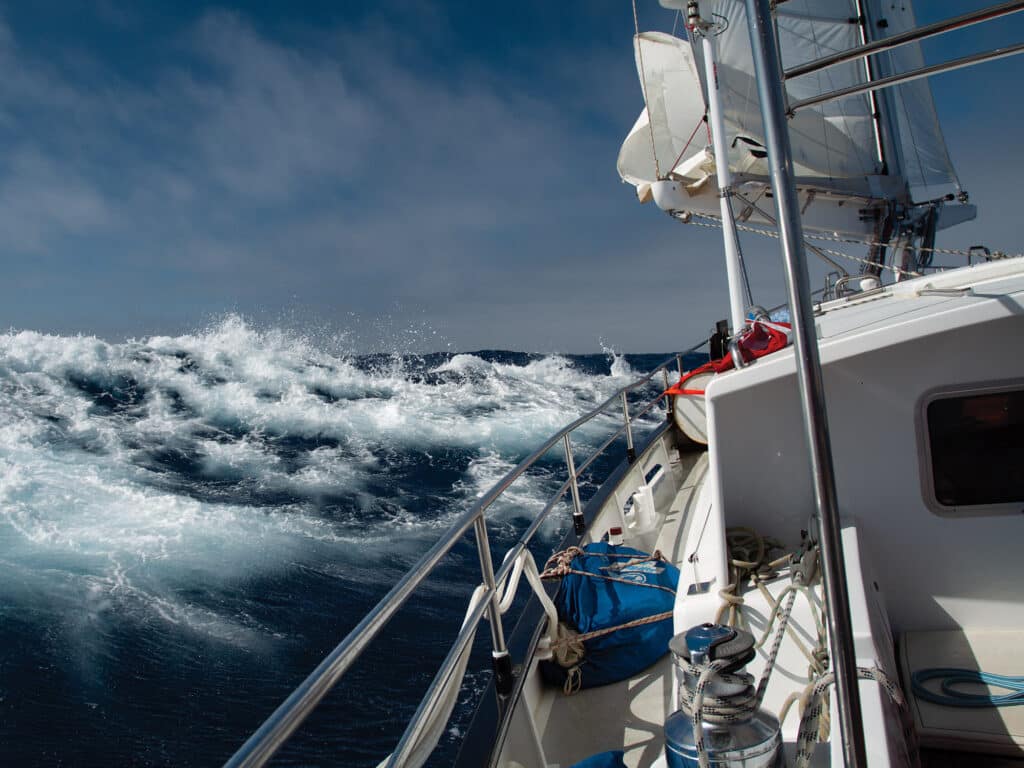
Steve Brown knows a thing or two about heavy weather. Throughout his sailing career, Brown and his wife, Trish, took on a four-year circumnavigation aboard their Oyster 56, Curious, sailed a 30,000-mile circumnavigation of the Americas—sailing north from Camden, Maine, and then an east-to-west transit of the Northwest Passage—and spent more than his fair share of time in the Southern Ocean.
Brown is up for debating the superlatively inhospitable places on Earth.
“Southern Georgia, in the South Atlantic, is the most unforgiving place I’ve ever sailed,” he says. “Although there was this one time, coming up the Le Mer Strait between Staten Island and Tierra Del Fuego.”
The sailing was the fault of his mountaineering interests, he claims, and he originally took to the sea for adventure. He followed in the footsteps of mountaineer-sailor Bill Tilman, and decided he needed to learn how to sail in order to “fill in the blanks on the map.”
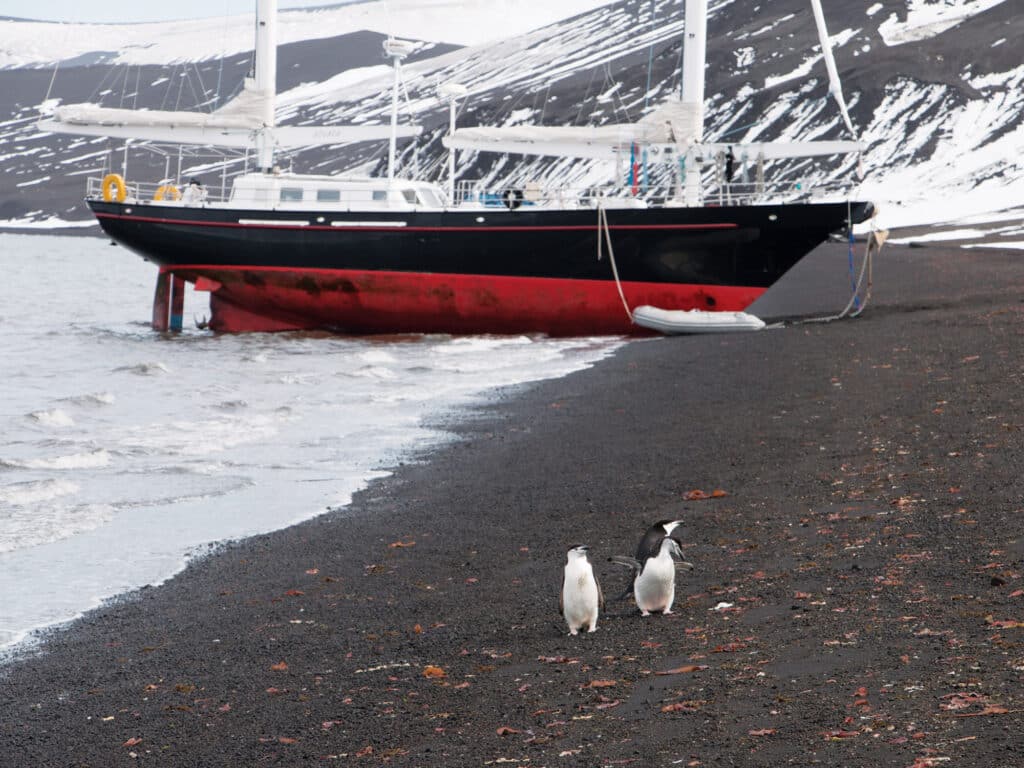
A starter dinghy was followed by a Furia 44, and then by the circumnavigation in the Oyster 56. When he bought the AeroRig Bestevaer 60C Novara, an aluminum-hull schooner designed as a research vessel, the expeditions stepped up a notch.
Along the way, there’s been brash ice and icebergs, rogue waves and drogues, penguins and polar bears. He’s a sailor who’s had the real-life experience of switching from gale-force storm management to survival tactics after conditions transcend control.
His current role is as mentor and ice pilot as Novara pursues a multiyear mission in the Caribbean working with coastal communities to educate and combat climate change, followed by a planned 2025 Northwest Passage.
Know Your Boat
Brown’s first piece of advice on heavy-weather management, offered during the Cruising Club of America’s 2022 seminar in Newport, Rhode Island, was: “Don’t go out in it,” but there were a few more lessons shared.
“Take your boat apart from stem to stern and know every inch of it,” Brown told me during a recent call. “If you’re going to be far from marinas and chandleries, ask yourself: If it breaks, can I live without it? Can I fix it? If you can’t live without or fix it, then you need a spare.
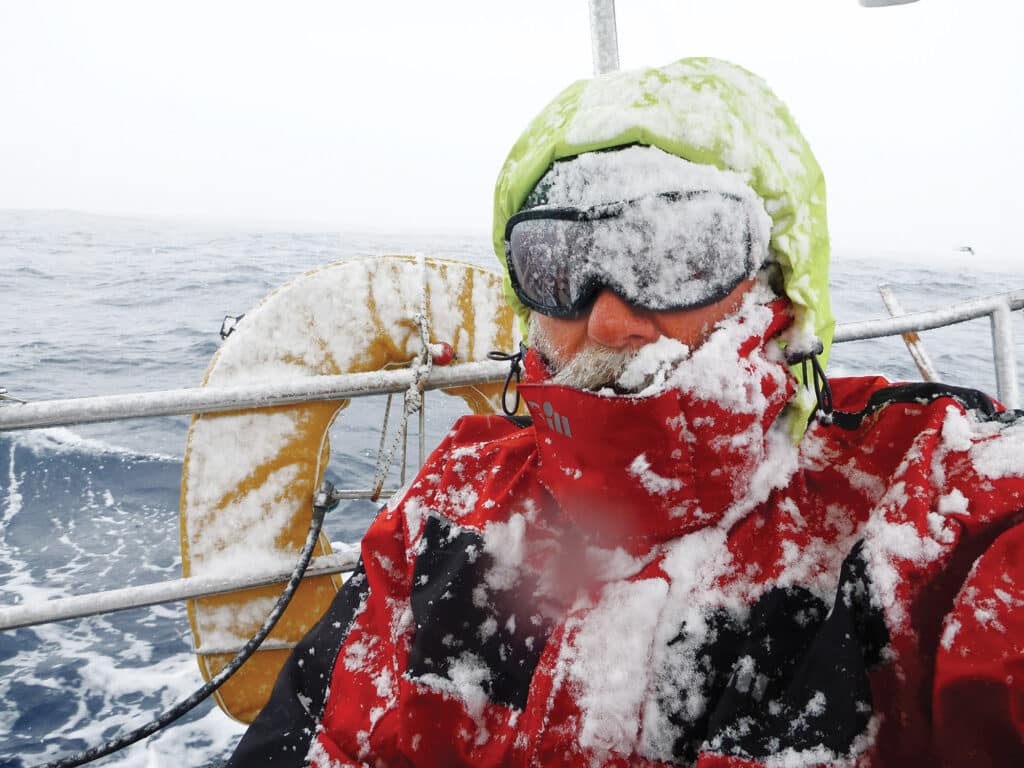
“When I prepared the boat in Camden for the 2014 Northwest Passage, I spent two and a half months for 15 hours a day on Novara getting to understand it and stripping it from stem to stern,” he says.
If you look at what Randal Reeves did, Brown said, in Reeves’ preparation for the Figure 8 Voyage of the Americas, he took that boat to pieces. “If you’re going to do something that demanding,” Brown says, “then you really have got to have gone through everything. If something goes wrong, then you’re not thinking, Oh, what can it be? You know, because you’ve taken the boat to pieces.”
Kirsten Neuschäfer, during her preparations for the 2022 Golden Globe Race, took apart her Cape George, Minnehaha, starting forward and finishing aft.
“You’ve got to strip down everything and know it’s in good condition,” Brown said. “When you know every inch of your boat, you know the strengths and weaknesses of your rig, hull, and systems. You’re able to assess problems quickly and are prepared to come up with solutions. The one thing that I didn’t strip down on Novara was the steering system. It’s an incredibly complex system, and when we sought advice, we decided that if it ain’t broke, don’t fix it. Unfortunately, moisture had built up on top of an exposed bearing. We got up as far as Newfoundland when the bearing broke.”
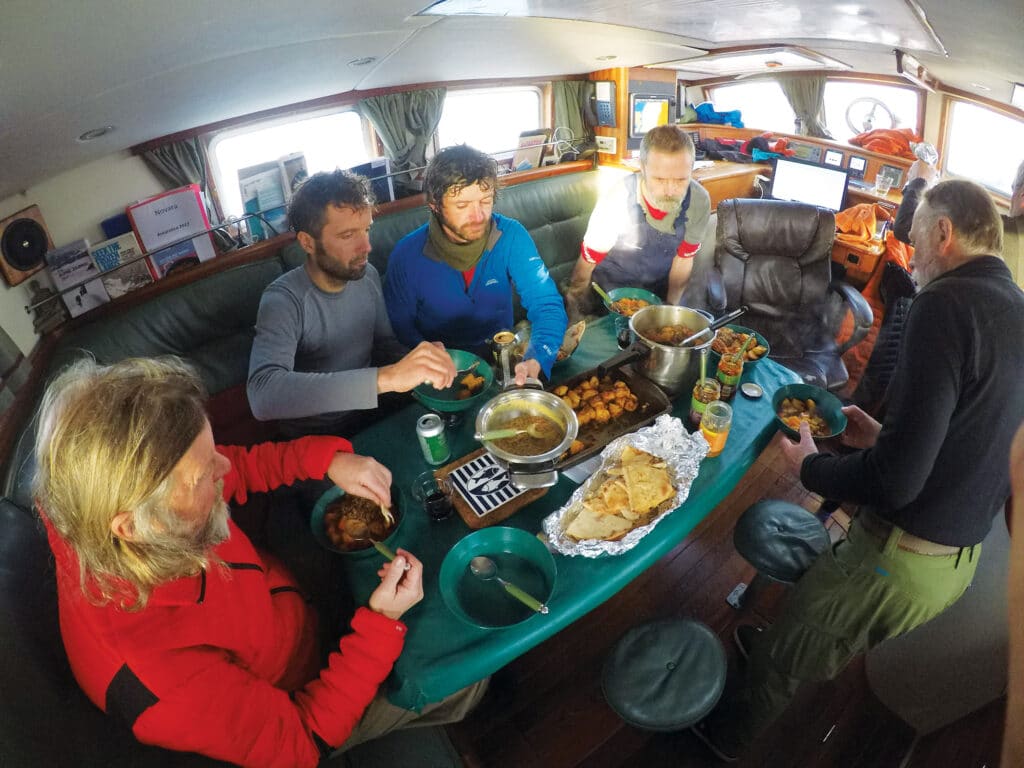
Be Prepared
Weather forecasts, man-overboard drills, storm sail management, a hot meal ready to go—each step you take in preparation gives you a greater chance of weathering a storm. Practice until you know what works for you, your boat and your crew. Make sure everyone knows the MOB drill and can perform each role.
Get regular weather forecasts that extend five to seven days out, of wind and seas. Remember, GRIB files have winds but not gusts or waves. Study the areas you plan to sail to familiarize yourself with the depths, sea bottom, landmasses and winds. All of these can play a role in wave size, windspeeds and wind directions.
If a low-pressure system is forecast in your area, study the wind directions and speeds. Try to avoid a blow by charting a safe course that minimizes your time in the path. If you can’t avoid the system, check equipment and chafe points, and remove solar panels before conditions deteriorate. As much as possible, attend to self-care: Get some sleep. Shower and clean up. Prepare meals and coffee.
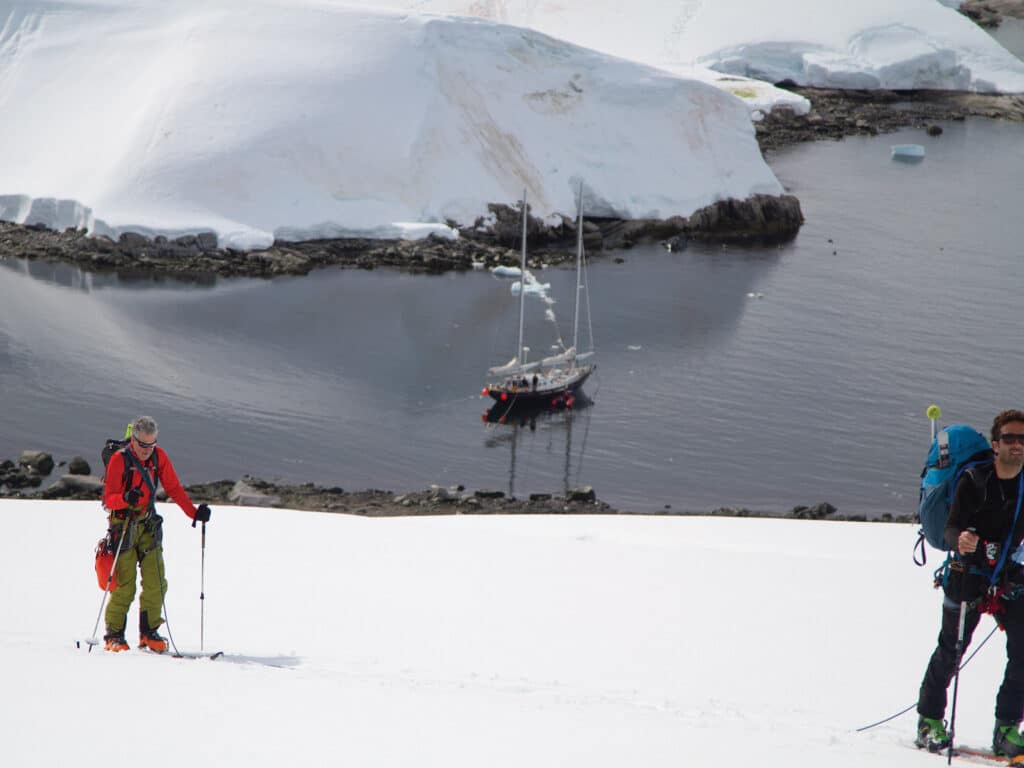
“Get the main down, and get it out of the way,” says Randall Reeves, one of Brown’s fellow CCA heavy-weather panelists. Reeves completed his record-breaking 2019 Figure 8 sail of the Americas aboard Moli, his 45-foot aluminum sloop, becoming the first person to sail solo and nonstop around the Americas. “I have two drogues on board, which I flake out and lash down on deck if a gale is in the forecast. I run what-if scenarios in my head and ask myself, What will I do?”
Stormy Weather
What’s your plan if you are overwhelmed by wind or seas?
As the wind builds, reef down, Brown says. Know beforehand what your sail plan is, and have your canvas ready. Know how to heave-to, and practice. And know how to manage your boat under hove-to conditions.
Heaving-to is a fantastic survival tactic, and it’s the go-to method for high-latitude experts such as Skip Novak, Brown says, but it’s absolutely essential to test it out. His boat, Novara, is an AeroRig and can’t heave-to. “I experimented with possible methods, but with little success,” he says, “so we researched other ways to ride out a storm.”
If the boat can no longer handle even the smallest of storm sails, take it down to bare poles. “We’ve had to do this only once, in 65 knots of wind off South Georgia,” Brown says.
Heavy Weather Sailing, Eighth Edition, by Martin Thomas and Peter Bruce, has an excellent section on storm tactics, including shortening sail, heaving-to, running before the wind, and drogue devices. Brown’s advice is included in the book, and he has written several reports on the Jordan series drogue based on his experience and the experiences of other sailors who have deployed the JSD.
“If there’s one piece of kit you need to put on your boat, it’s a Jordan series drogue,” Brown says. During Novara’s 2017 passage from South Georgia to the Falklands, while the boat was running under bare poles, wind and seas built to unmanageable levels. The boat carried too much speed running down the waves and was susceptible to a knockdown if it turned up into the face of a wave, or a pitchpole.
The drogue was ready on deck, lashed down, with the bridle in place, as wind and seas built. “We put it out off the stern, into 35 knots of wind,” Brown says. “Conditions worsened to 65 knots, with higher gusts and monstrous seas. The drogue slowed our speed, and we went below, and slept, ate and played cards for 48 hours. You need sea room to do this.”
His exchange with Neuschäfer before the 2022 Golden Globe Race focused on sizing her Jordan series drogue for her Cape George. Neuschäfer deployed the drogue during storm conditions off Cape Horn and held on for 12 hours.
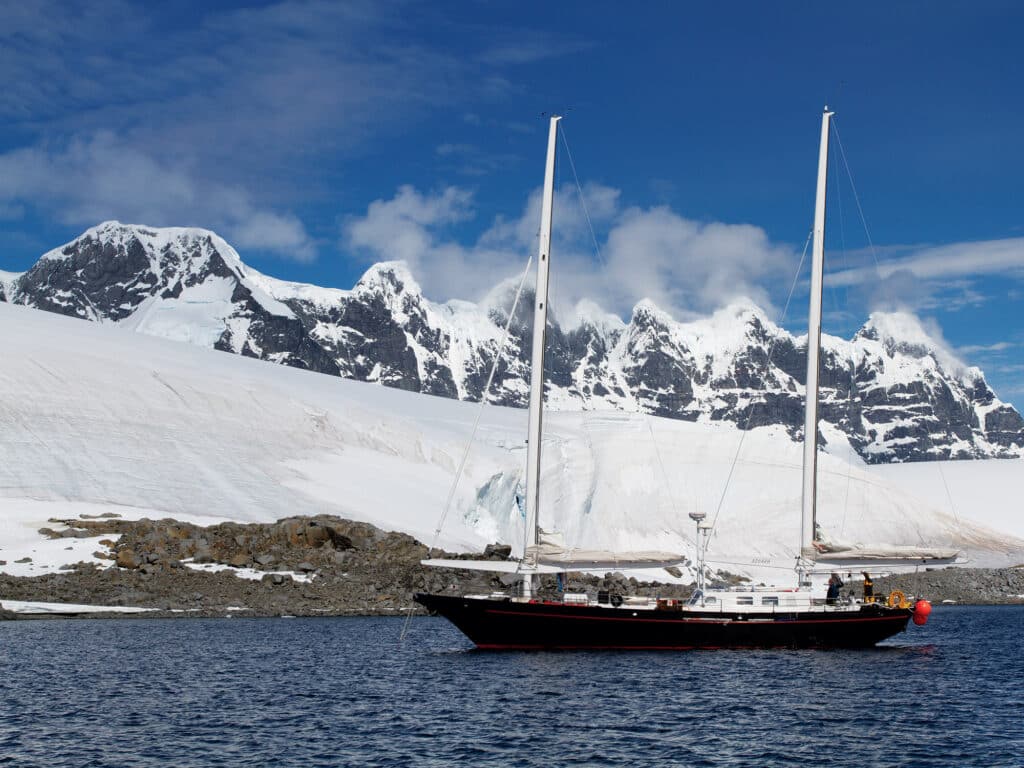
While competing in the 2008 edition of the GGR, Susie Goodall deployed a Jordan series drogue off her Rustler 36 during a storm 2,000 nautical miles west of Cape Horn. The drogue’s rope gave way at the bridle as she battled 60 knots of wind and massive seas. Goodall pitchpoled, was dismasted, and was knocked unconscious.
Although she survived and was rescued, her boat was a total loss. The JSD manufacturers, along with heavy-weather-sailing experts, used her experience to update recommendations for drogue sizing, based on boat tonnage. The key is to research and know which drag devices are appropriate for your boat, and know how to use them.
There’s a fantastic database on drag devices that offers an exhaustive list of options, Brown says. “If you look closely at the list, you can see my favorite, the ‘Milk Churn.’ Who among us doesn’t have one milk churn you could lob?
The great thing about this is that there are firsthand narratives of sailors using all of these techniques. You can actually read about some guy who chucked a milk churn. It’s worth taking the time to read. People who have been through this have shared their experiences, or at least those who survived did.”
A Curry on the Shore of Antarctica
During a January 2018 passage from the Falkland Islands to the South Shetlands, after making 685 miles south in five days, Steve Brown and Novara’s crew studied the GRIB files showing winds building above 30 knots and the sea state worsening.
“We changed course with the intention of running before the wind to Deception Island,” Brown says. Novara made a fast passage, but conditions rapidly deteriorated, with 45-knot winds, driving snow, and poor visibility. Ice and snow built on the rig, sails and deck.
Using radar and charts, Novara was able to enter Neptune’s Bellows, the pass into Deception Island’s caldera, but AIS showed multiple boats already in the intended anchorage of Telefon Bay. In Brown’s words:
We went into sort of a second choice: Pendulum Cove. We needed to get into the lee and out of the wind. We came around a bend and, as we prepared to lower the anchor, we were hit by a 100-knot gust.
Novara was knocked down literally as we were preparing to drop the anchor. The blow washed the aft mainsheet over the side, and it wrapped around the prop. The boat popped right back up, which is amazing since we had the centerboard up and the rig was heavy with ice. But once the mainsheet wrapped the prop, all I could do was steer straight up the beach.
Fortunately, with volcanic soil, there’s almost no rocks inside Deception Island, and we just plowed a big furrow. Novara is very round with a big keelson, and the centerboard is inside the keelson, so we plowed up the beach and sat there. The wind was raging, it was snowing like crazy, and we’d blown the jib. We tried to tame it—the aft jib—which had broken free and shredded itself, but we couldn’t. So I just said to the boys, “OK, everybody down below.” And they asked, “Well, what happens now?”
“I’ll put the kettle on and make a chicken curry for tea,” I replied. And that’s exactly what I did. We were inside. We were sort of safe. We weren’t going anywhere.
I made a big curry with all the trimmings, Naan bread, and everything, and we waited until conditions eased. Then we went out and had a look.
Novara has a big cable, three big anchors and a lot of chain. I told the crew that we would drag ourselves off on the high tide. We’d gone aground almost at high tide, but there was another 20 centimeters of tide over the next three days, and Novara’s got lots of ground tackle. We have two big bow anchors, with 200 meters (656 feet) of bow chain, a stern anchor with another 60 meters (196 feet), and four shorelines with 100 meters (328 feet) each. The plan was to put out three anchors, connect them to our winches and, at the highest tide, pull ourselves off.
We had a plan. Everyone has a role. We know what we’re going to do. Everybody’s fine, and there’s confidence and optimism in the event.
When you sail with a crew, you have to be aware of the strengths and weaknesses of the team you put together. When you’ve got a diverse team, you have to understand how best to keep them happy, how best to keep them fit, make sure they look after themselves. This starts before you leave the dock. That’s the biggie for me—understanding the boat, and if you’re sailing with crew, understanding the team that you’re working with.
You need to make sure you have the trust of your crew. You don’t want a skipper running around like a chicken with his head cut off. You tell them not to worry. I’ll start cooking dinner and it will be all right. Cool heads will prevail in these situations.
You have to put the pieces of the jigsaw together, when it comes to crew, and if you’ve got one piece that doesn’t fit, then it makes life difficult. The thing is, by and large, you look for people who have that third dimension, who can cope in that extreme situation. The Antarctica crew were, without exception, experienced sailors.
On Deception Island, we were up on the beach. When anything like that happens, within the terms of the permit you receive to explore these places, you have to notify the authorities. I notified the UK coast guard, and they picked up the phone to the Chilean navy, and it was out of my hands. We could have gotten ourselves off the beach, absolutely no question. But the next thing you know, there was a Chilean navy ship coming down to rescue us. They sent the RIB over, and I went to see the captain on the ship, and he said: “We’ve come to rescue you. We’ll take the crew off, and we’ll take you wherever you want to go.”
I told him that I was not leaving my boat. I needed to get Novara off the beach. And he said, “I don’t have permission to do that.” Following approval, he agreed to pull us off the beach.
They had a massive winch on the ship. I mean it was huge, with a big reel of 4-inch-wide polypropylene line. We made a bridle, and they connected it to the back of the boat. The weight of the line alone pulled the boat off the beach. It wasn’t even tight. Novara was once again safely afloat. —TN
More Info
For information on the Novara One Planet mission, led by Nigel Jollands and Veronica Lysaght, and the multiyear, worldwide climate awareness project,
visit novara.world.



